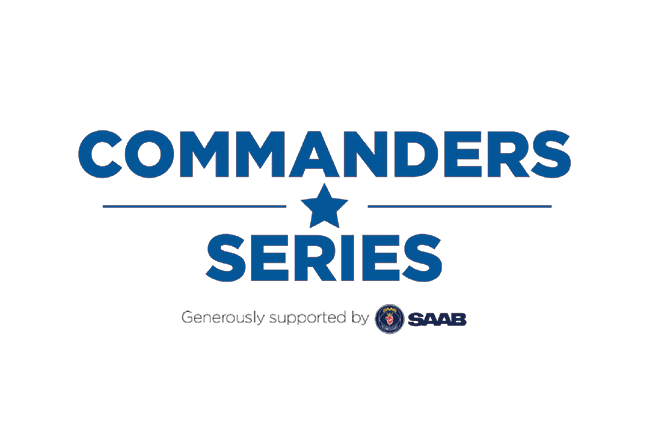General Dickinson describes how USSPACECOM safeguards US interests in space
On March 9, the Scowcroft Center’s Forward Defense (FD) practice hosted a virtual event featuring Commander of US Space Command (USSPACECOM) General James H. Dickinson as part of its Commanders Series, generously supported by Saab.
As commander of USSPACECOM, General Dickinson is responsible for defending US and allied interests in space while providing space-enabled combat readiness to warfighters around the globe. He joined Forward Defense in conversation with Defense One national security correspondent Jacqueline Feldscher to answer pressing questions on twenty-first century space security.
The bottom line? Space is vital to daily life: Everything from banking, to farming, to mapping and beyond rely on space-enabled capabilities. US private- and public-sector entities are dependent on space-based assets, and key competitors like China and Russia recognize this and are challenging free and open access to space. Through surveying the skies, USSPACECOM provides military actors with a comprehensive understanding of trends shaping the galaxy.
What threats exist in space?
USSPACECOM is responsible for a vast “geographic” AND “astrographic” area and operates in a constantly evolving space threat environment, notes General Dickinson.
Strategic competition launching into space. In November 2021, Russia successfully tested its Nudol ground-based anti-satellite weapon, which consequently created myriad space debris and endangered space-based assets in low-Earth orbit. Meanwhile, the Chinese have developed dual-use on-orbit technologies as seen with the SJ-17 and SJ-21 satellites, which are equipped with robotic arms to move or disable other satellites. China is also working to field non-kinetic and directed energy counterspace capabilities to blind adversaries’ space domain awareness (SDA). Russia and China have both tested hypersonic glide missiles and satellites similarly capable of endangering US interests in space.
To cislunar space and beyond. USSPACECOM’s area of responsibility extends from a hundred kilometers above the Earth’s surface to infinity. As competitors expand operations into cislunar space, the United States will need to determine a strategy for this novel domain of operations (as Forward Defense recommends in The Future of Security in Space: A Thirty-Year US Strategy). However, cislunar space is a new ground for USSPACECOM to survey, and expanded operations further complicate the need to achieve space situational awareness.
Why is outer space worth defending?
Space is crucial for the United States’ ability to effectively deter conflicts—and respond should deterrence fail—as the US military relies on satellites for communications, tracking of forces, and missile warnings. Adversaries recognize the US dependency on space and intentionally seek to weaponize this domain.
That’s where USSPACECOM comes in. Space is now a military operational domain, thereby warranting a national security responsibility to protect US and allied interests. According to General Dickinson, USSPACECOM is “supraglobal,” meaning that it encompasses relevant military and political activities on Earth and in space. Created in 2019, USSPACECOM reached initial operational capability in August 2021 and is still working towards full operational capability today.
Where does USSPACECOM fit into the picture?
USSPACECOM’s strategy rests upon three foundational pillars: countering competitive influence, strengthening relationships with partners, and building and maintaining a competitive edge. According to General Dickinson, SDA is the top priority, as it enables the United States to attribute and track activities in space.
Leveraging the Joint Force. USSPACECOM has curated a joint, combined, and partnered team by leveraging its relationships with the other military services, the intelligence community, the commercial sector, and international partners to develop effective SDA.
Working with allies and partners. General Dickinson explains USSPACECOM’s successful model for leveraging US allies and partners in space through formal forums and exercises. USSPACECOM is also working with the United Nations to establish global space norms in response to the exacerbated issue of space debris. Over the past couple years, multiple allies and partners have established their own space commands and/or created a Space Force equivalent. Furthermore, USSPACECOM is looking to form a pathway to partnership with states in Africa and South America.
Employing commercial tech innovations. General Dickinson explains his role as the global sensor manager, utilizing sensors to enhance SDA. Working with commercial sector leaders, USSPACECOM is improving its identification and incorporation of nontraditional sensors into US missile defense radars. Location is key to effective sensors, so SPACECOM has been working closely with the commercial sector to gain access to vital sensor locations. SPACECOM is working to incorporate all US terrestrial sensors and space-based assets to create one common operating system in order to have constant uninterrupted data. Similarly ripe for private-sector partnership is the small satellite market. General Dickinson recognizes that the transition from “big, juicy targets” to constellation of smaller satellites builds a redundant and resilient space security architecture.
You can watch “Navigating the New Strategic Realities of Space: A Conversation with Commander of US Space Command General James H. Dickinson” here. To watch other events in the Commanders Series, visit the webpage here. For more information about the Atlantic Council’s Forward Defense practice, visit the website here and subscribe for more.
Madison Littlepage is a Young Global Professional for Forward Defense in the Atlantic Council’s Scowcroft Center for Strategy and Security.
Read FD’s strategy paper on The Future of Security in Space

The Commanders Series, generously supported by Saab, is the Atlantic Council’s flagship speakers’ forum for senior military and defense leaders.
Explore Forward Defense

Forward Defense, housed within the Scowcroft Center for Strategy and Security, generates ideas and connects stakeholders in the defense ecosystem to promote an enduring military advantage for the United States, its allies, and partners. Our work identifies the defense strategies, capabilities, and resources the United States needs to deter and, if necessary, prevail in future conflict.
